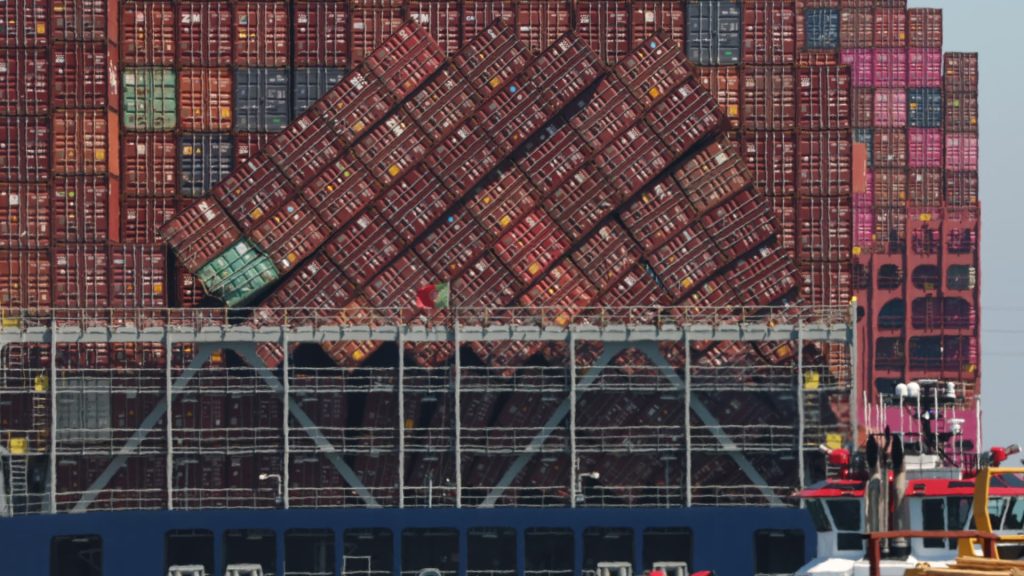For the markets and economy, much of the first half of this year was dominated by President Trump’s trade war. The abrupt shifts in global economics and manufacturing relationships led to wild swings in U.S. imports and exports, and as a result, in GDP readings.
As the year draws nearer to a close, the supply chain situation has settled somewhat. New data covering the container volumes coming into the U.S. from overseas markets in the first half of the year shows what changed and what hasn’t: Asia remains the dominant supplier to the U.S. market. China, meanwhile, remains far from “de-coupled” from the U.S. economy.
As far as what comes next: pent-up inflation may be the new wildcard in the data, and it’s an economic data point to watch that is tied directly back to the trade flows through the year’s first half, and will be a major factor in holiday season sales that overlap with the exhaustion of inventories brought in ahead of new trade taxes.
When there is a sharp rise in imports, which occurred during the frontloading, the greater demand is a negative contribution to GDP. That has made trade have a “quirky impact” on the GDP data in Q1 and Q2 of this year, according to Peter Boockvar, chief investment officer of One Point BFG Wealth Partners. (Q3 GDP is not out until December.) “When imports fall, like we saw in August with goods, it actually lifts GDP,” he said.
The Q1 GDP decline, the first for the economy since 2022, came as imports soared 41.3%, driven by a 50.9% increase in goods, the highest level of growth outside of the pandemic since 1974.
“The quirks are really an accounting quirk with the GDP math and is offset by changes in exports. It’s noise,” Boockvar said.
But there is a relevant underlying point about trade and consumer demand within the noise, Boockvar says. “I think most relevant point is that as the cost of imports go up because of tariffs, we seem to be buying less stuff from abroad,” he said.
Focus turns to inflation and holiday season demand outlook
Antonella Teodoro, senior consultant for freight transport economic consultant MDS Transmodal, says the frontloading of goods has skewed the relationship between trade and GDP, but it isn’t one-to–one. “In the U.S., container volumes can move more sharply than GDP because they’re heavily weighted toward consumer goods,” she said.
Q2 GDP growth came in at 3.3%, with imports down nearly 30% in the quarter after the stockpiling of inventory slowed post-Trump’s April 2 “Liberation Day” announcement.
“Retailers’ restocking or inventory unwinds can make volumes swing even if GDP growth is moderate, and vice versa,” said Teodoro. “There’s no fixed ‘multiplier’ linking container imports and GDP. We can measure how imports and GDP move together, but this relationship can break down during major policy changes or structural shifts like supply-chain diversification,” she said.
Now, with importers stocked up on a lot of goods, Boockvar said they are “swimming in inventory” and that was a likely factor in the drop in imports in the recent August data on goods.
The Q2 GDP spending data was better than expected. A measure called final sales to private domestic purchasers jumped 1.9%, and is a figure that the Federal Reserve watches closely as a sign of real demand. Data like that is critical to the outlook with consumer spending estimated to be roughly two-thirds of U.S. gross domestic product.
But what comes next remains a focus for a market worried about the next phase of supply chain management. “I certainly agree that price increases from the tariffed inventory are in front of us, as most of the products sold over the prior few months was imported inventory that did not include tariffs,” Boockvar said.
“Shoppers are actively hunting for value, leveraging deals and promotions to stretch their dollars,” said Lauren Murphy, managing director, Wells Fargo Retail Finance Supply Chain. Retailers, meanwhile, are being more mindful of low and middle-income consumers who have tighter budgets. “Retailers are fine-tuning their pricing strategies to remain competitive while also being selective about which categories to discount and how much inventory to stock. Ultimately, the success of this approach will become clearer once holiday shopping kicks into full gear, likely within the next month,” she said.
Nike reported improved sales in its latest earnings this week, but also warned that clearing out inventory required discounting, and it expected a decline during the holiday sales period, usually the strongest of the year for retailers.
How trade flows shifted, but stopped short of China ‘decoupling’
Teodoro said even as U.S. policy appears to be reshaping where goods come from, the scale of containerized flows remains relatively stable.
“Tariffs, pandemic-related disruptions and geopolitical tensions have reduced China’s direct share of U.S. imports, while Southeast Asia, Mexico, and Canada are playing an increasingly important role in supplying the U.S. market,” she said. But she added, “this reflects diversification rather than full decoupling, as Chinese inputs remain deeply embedded in many global value chains.”


